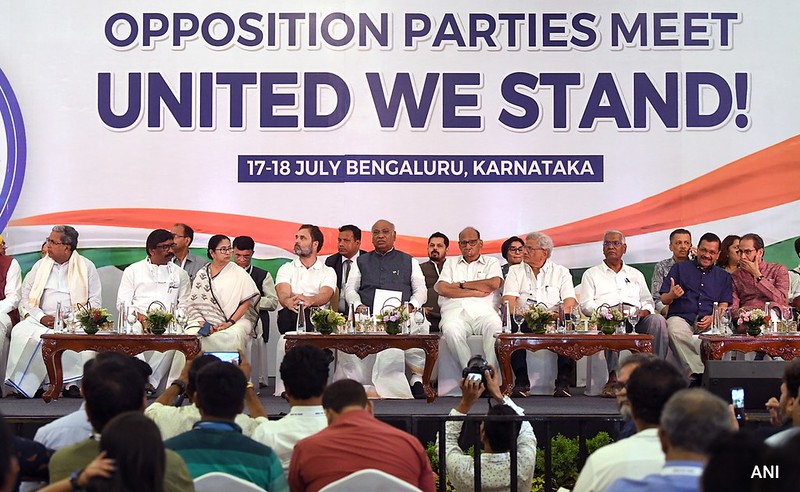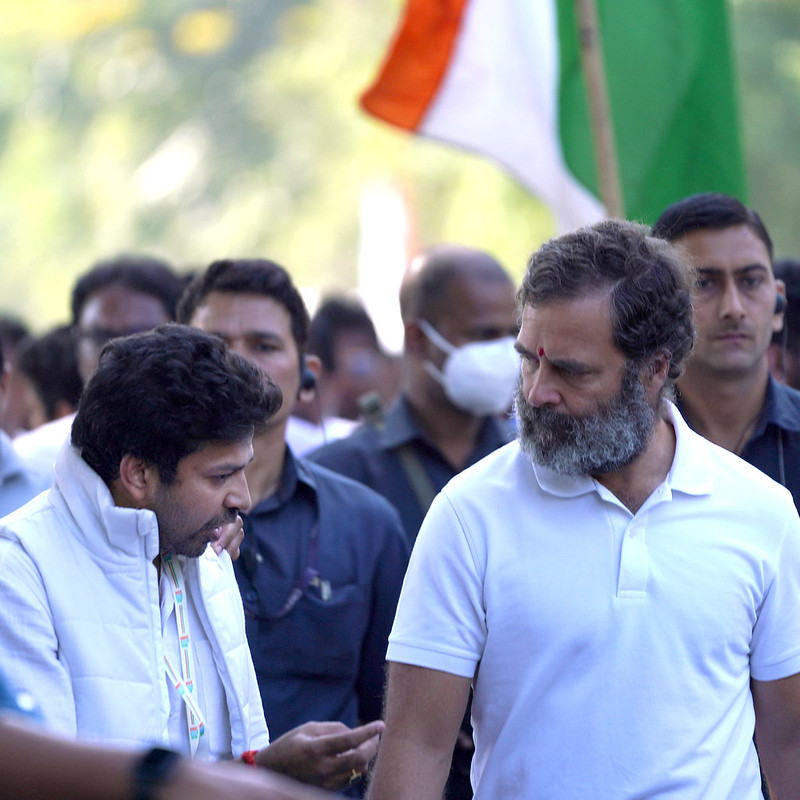
by Ashraf Nehal
The diminished return to power of Narendra Modi’s Bharatiya Janata Party (BJP) through its strategic partnerships with regional parties like the Telugu Desam Party (TDP) and the Janata Dal (United) (JD(U)) was certainly the headline of the Indian election. However, equally significant is the emergence of a united opposition front, comprising diverse parties from across the ideological spectrum, which has introduced a new dynamic in Indian politics after a decade.
The unprecedented cooperation among opposition parties, who set aside their differences to cohesively challenge the BJP’s dominance, signals a potential recalibration of India’s democratic landscape. It suggests a return to the opposition’s crucial role in maintaining checks and balances on the government, fostering healthy debate, and ensuring that diverse voices are heard in the national discourse.
The interaction between the ruling coalition and the reinvigorated opposition will shape the country’s democratic future, most immediately in the next general election in 2029. In the interim, both sides face distinct challenges and responsibilities in upholding the principles of pluralism and representative governance.
Timeline of Opposition’s Resurgence
The 2019 general elections triggered a rethink among the opposition parties. That election had left the BJP’s main national opponent, the Indian National Congress (INC), fragmented. However, regional parties such as the Trinamool Congress and the Aam Aadmi Party stepped in to fill the void. Confronted by the BJP’s overwhelming mandate and Prime Minister Modi’s sustained appeal, regional parties found themselves compelled to unite and form strategic coalitions. This was driven both by self-preservation and the desire to mount an effective challenge against the BJP’s dominance. Thus, these parties sought to capitalize on existing public grievances against the government, such as discontent over the Citizenship Amendment Act (CAA) and the farmers’ protests, in an attempt to consolidate support for the opposition.
The 2023 Karnataka and Telangana state elections, where the Congress secured victories, further catalyzed the opposition’s unity. The formation of the Indian National Democratic Inclusive Alliance (INDIA) in 2023 addressed long-standing criticisms about the opposition’s inability to unite and suggested that the BJP and the National Democratic Alliance (NDA) would face a formidable challenge in the 2024 national elections. The once-scattered resistance coalesced into a more consolidated and strategic bloc, reminiscent of the Janata Party era, when all political factions from the opposition, encompassing social, left-wing, and right-wing groups, had united to challenge and remove Indira Gandhi from power.
The effectiveness of this opposition strategy of forming alliances was demonstrated in the 2024 national elections in some crucial battleground states and BJP strongholds like Uttar Pradesh. The Congress-Samajwadi Party alliance not only yielded positive results in Uttar Pradesh but also made its imprint felt in neighboring Bihar, where the opposition bloc went from one seat in 2019 to 9 in 2024.
Additionally, in a stunning political twist, Maharashtra’s opposition scored a major victory against the BJP’s power play. The ruling party’s attempt to splinter its former ally, the Hindu nationalist Shiv Sena, and the Congress-aligned Nationalist Congress Party (NCP) backfired spectacularly. This ‘Operation Lotus‘ – aimed at toppling the opposition’s Maha Vikas Aghadi (MVA) coalition – instead sparked public sympathy for the opposition. Seizing the moment, an unlikely alliance between the centrist Congress, NCP (Sharadchandra Pawar), and the Shiv Sena (Uddhav Balasaheb Thackeray) faction challenged BJP’s dominance, striking a chord with voters hungry for change. This David-versus-Goliath political drama showcases the unpredictable nature of Indian democracy, where even ideological opposites can unite to upset the established order. These tactics underscored the opposition’s capacity to transcend regional and ideological fissures to present a united front and challenge the BJP’s dominance in some key states.
These opposition victories demonstrate the power of strategic alliances and suggest a potential shift in voter sentiment away from the BJP. However, the opposition’s ability to maintain unity and effectively govern remains untested. Upcoming assembly elections in states such as Maharashtra will reveal whether this marks a temporary setback for the BJP or a fundamental realignment of Indian politics.

Fluid Coalitions: The Dynamics of Realignment
The complex reshuffling of alliances prior to the 2024 national elections, in response to shifting voter priorities and changing national politics, initially suggested a weakening of the BJP-led coalition’s strength. Former NDA allies like JD(U), Shiv Sena (UBT), and Shiromani Akali Dal transitioned to the opposition, driven by disagreements over the ruling government’s decisions on implementing the controversial Citizenship Amendment Act, delaying the caste census, and farm laws.
This exodus or the metamorphosis of these former ruling parties into opposition forces was rooted in a mix of ideological differences and regional imperatives. Regional players like the Shiv Sena had to balance traditional Hindu ideology with voter priorities on the economy and social justice, sparking identity tensions. Parties like Bihar’s JD(U) faced credibility issues as welfare delivery struggled, undermining proclaimed development agendas. Meanwhile, local and regional imperatives came into play—the AIADMK leveraged Tamil identity against the Center, and the Akali Dal struggled to reconcile Sikh interests in Punjab amid polarizing national issues like the farmers’ movement.
The opposition’s electoral chances heavily depended on their ability to stay united despite the BJP’s strategic maneuvers to pry them apart. Political realignments reshaped key states’ electoral landscapes. In Maharashtra, the MVA was formed when the Shiv Sena broke from the BJP to join the Congress and the NCP. Similarly, Bihar’s Mahagathbandhan emerged after JD(U) left the BJP to ally with the Congress and the Rashtriya Janata Dal. These shifts bolstered the opposition by bringing former BJP partners into their fold, altering the balance of power in these crucial states. However, while the opposition gained allies, it was hampered by the divergent regional interests of its members and the lack of consensus on leadership and strategy. Ultimately, the BJP succeeded in mitigating the impact of these realignments while retaining its core support base.
The Arduous Path Ahead for the Opposition Alliance
The opposition capitalized on widespread economic discontent, emphasized high unemployment and inflation, and drew attention to the lingering effects of the COVID-19 pandemic to challenge the BJP’s dominance. This strategy aimed to shift focus onto tangible economic issues affecting daily lives. Regional parties highlighted their governance credentials and alleged corruption in the BJP ranks. They also pitched themselves as defenders of India’s secular fabric to garner support from minority communities and secular constituencies. The arrests and legal scrutiny faced by opposition leaders like Arvind Kejriwal, Hemant Soren, and Rahul Gandhi burnished the opposition’s depiction of the BJP assailing democracy. Ultimately, its campaign narrative—a calculated amalgam of economic populism, allegations of democratic regression, and positioning as a secular counterweight to the BJP’s Hindu nationalist rhetoric—could not dislodge the ruling party’s electoral juggernaut. However, its higher representation in Parliament seats signals that the opposition’s campaign message resonated with voters.
The INDIA bloc will face the tough challenge of navigating coalitions, delivering economic progress to disillusioned voters, and upholding democratic principles. Their success hinges on balancing regional aspirations with national interests, providing stable governance, countering perceived threats to constitutional values, and offering a coherent alternative to the BJP’s Hindu nationalist narrative. The upcoming state elections in Maharashtra and Haryana will critically assess the opposition’s unity and electoral appeal. The MVA alliance’s joint effort against the BJP-led coalition in Maharashtra will be a pivotal gauge of their political strength.
The opposition’s performance in these state elections will indicate whether they can mount a serious challenge to the BJP at the national level in 2029. However, in the meantime, by leveraging their increased numbers in Parliament, the opposition can enhance accountability and provide robust checks and balances on the government’s actions, vital for maintaining a healthy democracy.
source : southasianvoices
